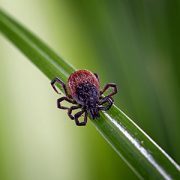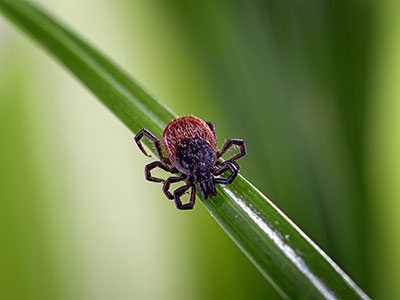White children more likely to receive unnecessary antibiotics in ED

Although antibiotics can turn the tide for a variety of illnesses, they are ineffective against those caused by viruses. Despite this well-known fact, doctors often prescribe antibiotics for viral illnesses.
Infections now considered relatively easy to treat, including some forms of diarrhea and pneumonia, were the leading cause of death throughout the developed world until the 20th century. Then, scientists developed what eventually turned into a miracle cure: Antibiotics that could kill or thwart the growth of a broad array of bacterial species.
Although antibiotics can turn the tide for a variety of illnesses, they are ineffective against those caused by viruses. Despite this well-known fact, doctors often prescribe antibiotics for viral illnesses. Taking these drugs unnecessarily can fuel antibiotic resistance, giving rise to bacteria that don’t respond to the drugs that kept them in check in the past.
A new multicenter study shows how prevalent this scenario can be in hospitals’ Emergency Departments. This research, led by Monika K. Goyal, M.D., M.S.C.E., director of research in the Division of Emergency Medicine at Children’s National Health System, shows that non-Latino white children seeking treatment for viral infections in the Emergency Department (ED) are about twice as likely to receive an antibiotic unnecessarily compared with non-Latino black children or Latino children.
These findings, published online Sept. 5, 2017 in Pediatrics, echo similar racial and ethnic differences in treating acute respiratory tract infections in the primary care setting.
“It is encouraging that just 2.6 percent of children treated in pediatric EDs across the nation received antibiotics for viral acute respiratory tract infections since antibiotics are ineffective in treating viral infections,” Dr. Goyal says. “However, it is troubling to see such persistent racial and ethnic differences in how medications are prescribed, in this case in the ED. In addition to providing the best evidence-based care, we also strive to provide equitable care to all patients.”
Acute respiratory tract infections are among the most common reasons children are rushed to the ED for treatment, Dr. Goyal and co-authors write. Overprescribing antibiotics is also rampant for this viral ailment, with antibiotics erroneously prescribed for 13 percent to 75 percent of pediatric patients.
In the retrospective cohort study, the research team pored over deidentified electronic health data for the 2013 calendar year from seven geographically diverse pediatric EDs, capturing 39,445 encounters for these infections that met the study’s inclusion criteria. The patients’ mean age was 3.3 years old. Some 4.3 percent of non-Latino white patients received oral, intravenous or intramuscular antibiotics in the ED or upon discharge, compared with 2.6 percent of Latino patients and 1.9 percent of non-Latino black patients.
“A number of studies have demonstrated disparities with regards to how children of different ethnicities and races are treated in our nation’s pediatric EDs, including frequency of computed tomography scans for minor head trauma, laboratory and radiology tests and pain management. Unfortunately, today’s results provide further evidence of racial and ethnic differences in providing health care in the ED setting,” Dr. Goyal says. “Although, in this case, minority children received evidence-based care, more study is needed to explain why differences in care exist at all.”
At a time of growing antibiotic resistance, the study authors underscored the imperative to decrease excess antibiotic use in kids. Since the 1940s, the nation has relied on antibiotics to contend with diseases such as strep throat. Yet, according to the Centers for Disease Control and Prevention, at least 2 million people in the United States are infected with antibiotic-resistant bacteria each year.
According to the study authors, future research should explore the reasons that underlie racial and ethnic differences in antibiotic prescribing, including ED clinicians eager to appease anxious parents as well as implicit clinical bias. Dr. Goyal recently received a National Institutes of Health grant to further study racial and ethnic differences in how children seeking treatment at hospital EDs are managed.
“It may come down to factors as simple as providers or parents believing that ‘more is better,’ despite the clear public health risks of prescribing children antibiotics unnecessarily,” Dr. Goyal adds. “In this case, an intervention that educates parents and providers about appropriate antibiotic use could help the pediatric patients we care for today as well as in the future.”






